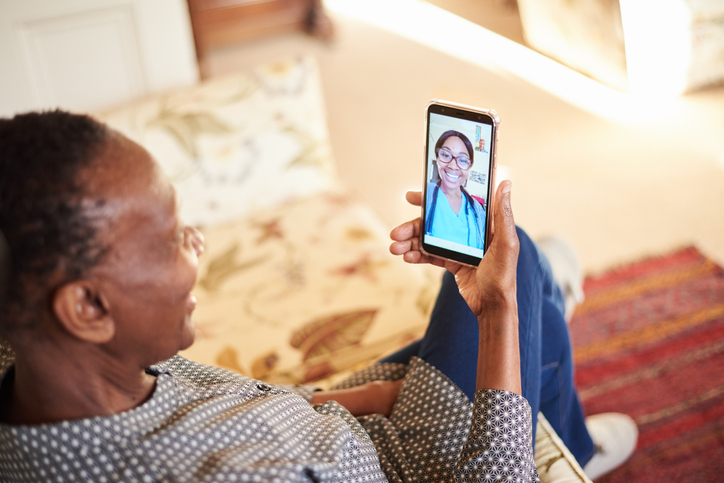
Primary care physicians (PCP) provide a “medical home” to patients so they can receive patient-centered, comprehensive, and coordinated health care. PCPs are the point of entry for the entire health system, and they refer patients to medical specialists for highly specific health care services as needed.
PCPs are in great demand, with the national average percentage of new patients for primary care practices at 45 percent. But numerous studies show a serious shortage and high turnover rates of PCPs across the country. With a patient churn rate of 48 percent, PCPs are losing more patients than they retain.

Health Benefit Consultants, Share Your Expert Insights in Our Survey
Dr. Ron Dixon Ronald Dixon, MD, is the founder and CEO of CareHive Health. Ron is a medical doctor, entrepreneur, and advocate for the bridging of technology, data, and medicine to enhance the provider and patient experience. He was the founder of Healthcare 360, Former Head of Clinical Affairs at Onduo LLC, Medical Director at […]
The ability to retain patients comes with a tremendous cost to all physicians – both PCPs and specialists. A 2019 study in the Annals of Internal Medicine concluded that costs related to physician turnover and reduced clinical hours is, conservatively, $4.6 billion annually. At the organization level, the cost comes to about $7,600 per employed physician each year.
Patients are leaving traditional, coordinated care settings for more convenient “on-demand” health care services through walk-in urgent care centers, emergency rooms, and independent telemedicine services. This trend exacerbates ‘patient leakage’ – when patients make frequent and unnecessary visits to urgent care centers and ERs after hours or on the weekends – that negatively impacts the health of the patient and increases healthcare costs.
On-demand care is usually independent from the care a patient receives from their medical home, so their physicians may never receive results from these visits about their illnesses and injuries. Although convenient for the patient, this type of disconnected care could lead to more serious complications for the patient and diminishes the trusting, long-term doctor/patient relationship that lies at the heart of health care.
Industry figures show that across the nation, urgent care centers are approaching 10,000 in number. Freestanding ERs, which often carry price tags comparable to ERs are growing exponentially. And, yet. costs for medical care services from emergency rooms, in particular, are expensive and commonly unnecessary.

A Deep-dive Into Specialty Pharma
A specialty drug is a class of prescription medications used to treat complex, chronic or rare medical conditions. Although this classification was originally intended to define the treatment of rare, also termed “orphan” diseases, affecting fewer than 200,000 people in the US, more recently, specialty drugs have emerged as the cornerstone of treatment for chronic and complex diseases such as cancer, autoimmune conditions, diabetes, hepatitis C, and HIV/AIDS.
Healthcare executives are extremely concerned about patient retention, yet most leaders admit they do not employ the right tools to prevent losing patients. They are frustrated with rising health insurance costs and want effective, cost-containing initiatives to improve the long-term health and well-being of their workers. Potential solutions to remedy patient retention have been implemented with little success.
Tech-enabled connections, beyond face-to-face
Technology has enabled responsive customer services in just about every area of our lives – via text message, phone call, email, or virtual meetings. Now technology companies are partnering with medical groups, healthcare systems, and payors to offer long-term solutions for retaining patients through innovation. These companies offer an extension of the medical team with a “virtual-care practice” by providing on-call clinicians who are available after hours and weekends to patients for their healthcare needs.
There are many benefits to going beyond face-to-face medical care to the virtual-care practice concept. Because urgent care centers and ERs don’t have immediate access to a patient’s health record when caring for a patient, the patient’s healthcare provider rarely receives important information from these off-hour visits. By setting up a virtual care practice, physicians can connect their patients’ electronic health records to clinicians providing after-hour and weekend care. Using text messaging and email, clinicians then navigate patients to the proper resources, and all communications from the virtual care practice are incorporated into the patient’s medical record.
This connected care will ultimately enable both PCPs and clinicians to better diagnose, assess, treat, and prescribe medications while preventing expensive trips to a walk-in clinic or ER thus lowering medical costs. It will lead to better communications and greater success for PCPs to care for their patients and enjoy long-lasting physician/patient relationships.
Sometimes a simple direction is enough to help a patient find the answers to their healthcare questions and concerns. By putting a solid telehealth/virtual care partner solution in place, PCPs can provide extended guidance and care to their patients outside of their office hours.
Photo credit: AJ_Watt, Getty Images
Ronald Dixon, MD, is the founder and CEO of CareHive Health. Ron is a medical doctor, entrepreneur, and advocate for the bridging of technology, data, and medicine to enhance the provider and patient experience. He was the founder of Healthcare 360, Former Head of Clinical Affairs at Onduo LLC, Medical Director at Mass General Hospital, and is an expert on data-driven virtual care. He received his Doctor of Medicine from Dartmouth College.












